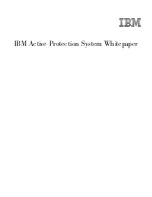
User Sources
259
n
ov
do
cx (e
n)
16
Ap
ril 20
10
For information about each of the wizard pages, click the
Help
button or refer to the following
table:
Wizard Page
Details
Connection Information page Specify the information required to create a connection to the LDAP
directory:
Connection Name:
Specify a descriptive name for the
connection to the LDAP directory.
Address:
Specify the IP address or DNS hostname of the
server where the LDAP directory resides.
Use SSL:
By default, this option is enabled. Disable the option
if the LDAP server is not using the SSL (Secure Socket Layer)
protocol.
Port:
This field defaults to the standard SSL port (636) or non-
SSL port (389) depending on whether the
Use SSL
option is
enabled or disabled. If your LDAP server is listening on a
different port, select that port number.
Root Context:
The root context establishes the point in the
directory where you can begin to browse for user containers.
Specifying a root context can enable you to browse less of the
directory, but it is optional. If you don’t specify a root context,
the directory’s root container becomes the entry point.
Certificate Page
(Conditional) If you selected Use SSL on the previous Wizard page
(Connection Information), the Certificate page displays as the next.
step in the Wizard. Ensure that the Certificate is correct.
Credentials page
Specify a username and password for accessing the directory:
Username:
Specify the username for a user that has read-
only access to the directory. The user can have more than
read-only access, but read-only access is all that is required
and recommended.
For Novell eDirectory access, use standard LDAP notation.
For example:
cn=admin_read_only,ou=users,o=mycompany
For Microsoft Active Directory, use standard domain notation.
For example:
Password:
Specify the password for the user you specified in
the
Username
field.
















































